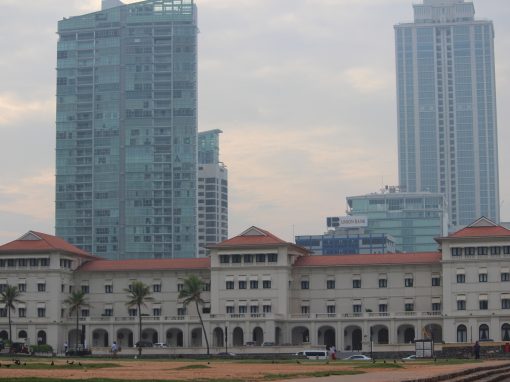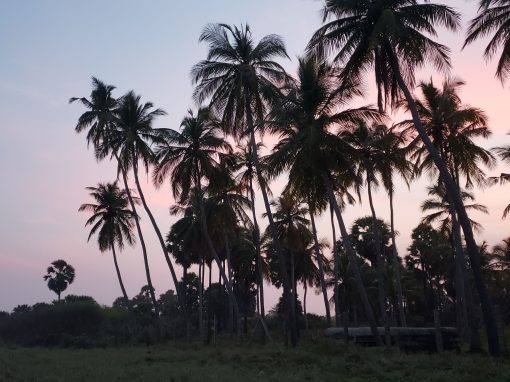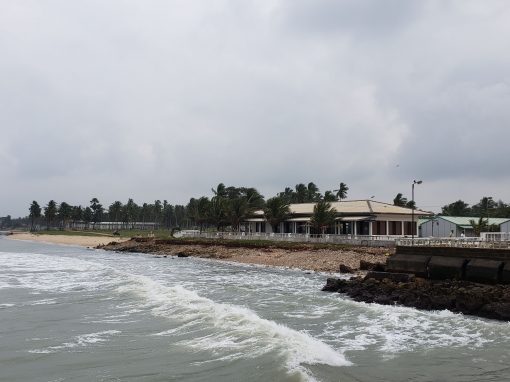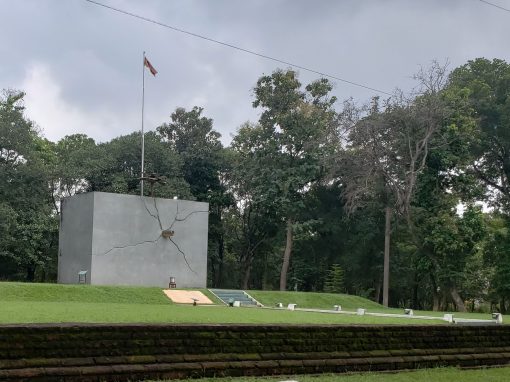Introduction
In the Jaffna district, the original Keerimalai Nagulaswaram Temple and surrounding structures were destroyed during the war.
The ruins can still be seen adjacent to the rebuilt structure. (Photo © Stephen Cook)
In the last phase of the 26-year Sri Lankan civil war, the UN estimates some 40,000 people were killed as violence within the country reached new peaks.
In the intervening decade since the war ended in 2009, Sri Lanka has transformed itself into a major travel destination. Tourism development zones ferment growth at an exponential rate while each year more and more international travelers visit the island nation.
But in the northern and eastern provinces, those areas most affected by the war, tourism – touted as a great economic driver and equalizer – has not brought peace. Rather, it accents the absence of reconciliation: many are still missing, their fates unknown; LTTE fighters yet languish in central government prisons, their legal rights stripped by the sweeping power of antiterrorism laws; and, perhaps most crucially, war crimes have not been addressed by any human rights tribunal.
Even 10 years on, the military maintains a heavy presence in these areas and occupies vast tracts of land. Although in late June the government claimed it had returned most occupied lands, the claim is dubious at best. As an October 2018 report from Human Rights Watch claims, “there has been no transparency in the process and many affected communities dispute these claims.”
The report also notes that despite no active combat, the military budget has increased steadily even since the election of a reformist government in 2015.
The military itself has become increasingly involved in business ventures, including tourism. In 2009 the army numbered approximately 200,000 troops, five times larger than in the 1980s. With the end of hostilities, the overwhelmingly Sinhalese military began operating tourism ventures, especially in occupied areas, to provide work for its soldiers.
But as the international non-profit Sri Lanka Campaign for Peace and Justice director Richard Gowing explains, the military threads through tourism in several different forms.
In the face of a stalled reconciliation process, tourism development in former conflict areas looks like military-run resorts and hotels operating on unreturned land taken during the war and the continued displacement of Tamil and Moor minorities by tourism projects that do not hire them but bring in workers – often Sinhalese – from elsewhere.
In December 2018, I traveled to some of these areas to see firsthand how tourism had affected the lives of those still grappling with the legacy of the war. In the Northern and Eastern Province, the scars of conflict are still visible.
This project is the result of conversations with those who have not seen the prosperity and healing supposedly offered by peace but rather suffer under a state that has failed to address their needs and opted to drive tourism development even at the cost of their well-being.
For some, peace is only an occupation by tourism.




